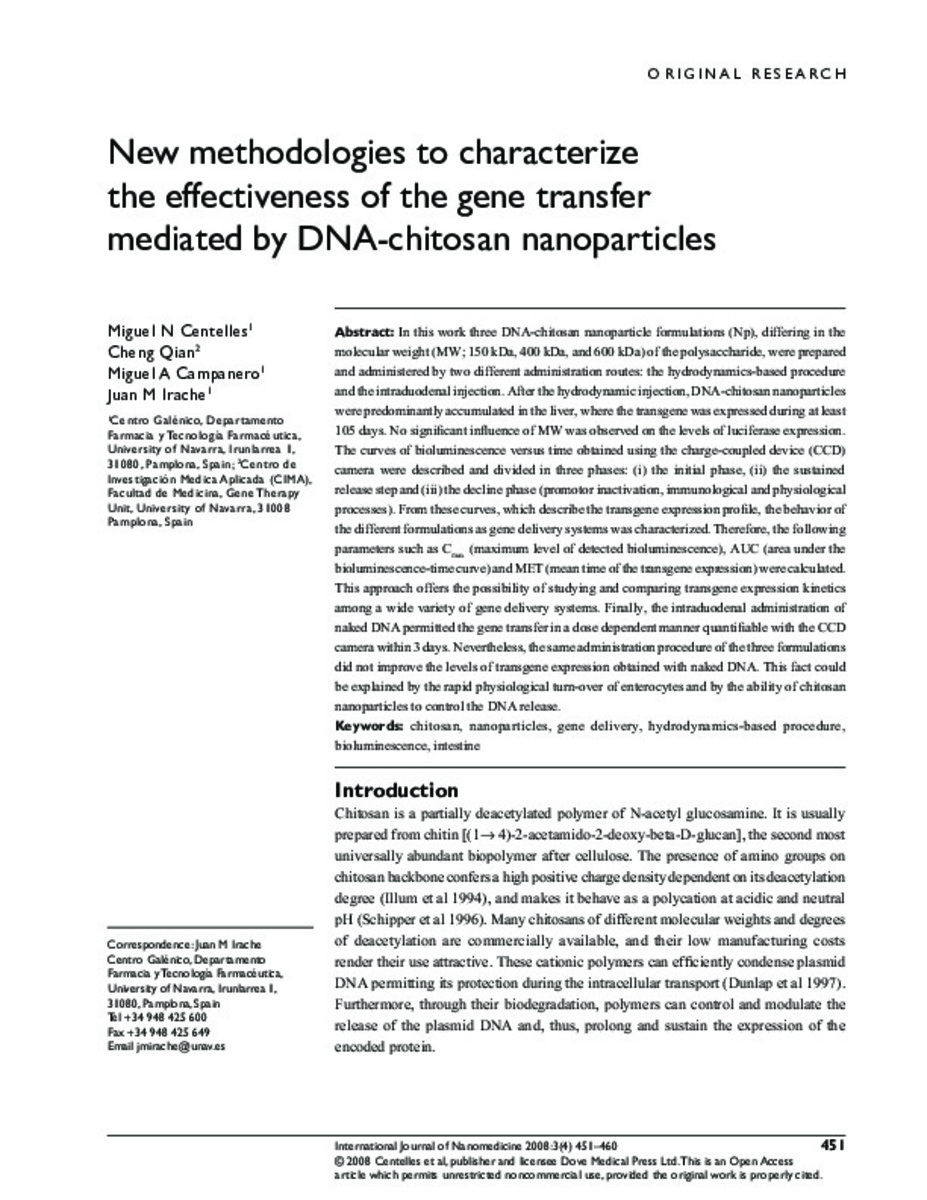New methodologies to characterize the effectiveness of the gene transfer mediated by DNA-chitosan nanoparticles
Palabras clave :
Chitosan
Nanoparticles
Gene delivery
Hydrodynamics-based procedure
Bioluminescence
Intestine
Fecha de publicación :
2008
Editorial :
Dove Medical Press Ltd.
Cita:
Centelles MN, Qian C, Campanero MA, Irache JM. New methodologies to characterize the effectiveness of the gene transfer mediated by DNA-chitosan nanoparticles. Int J Nanomedicine 2008;3(4):451-460.
Aparece en las colecciones:
Estadísticas e impacto
0 citas en

0 citas en

Los ítems de Dadun están protegidos por copyright, con todos los derechos reservados, a menos que se indique lo contrario.










